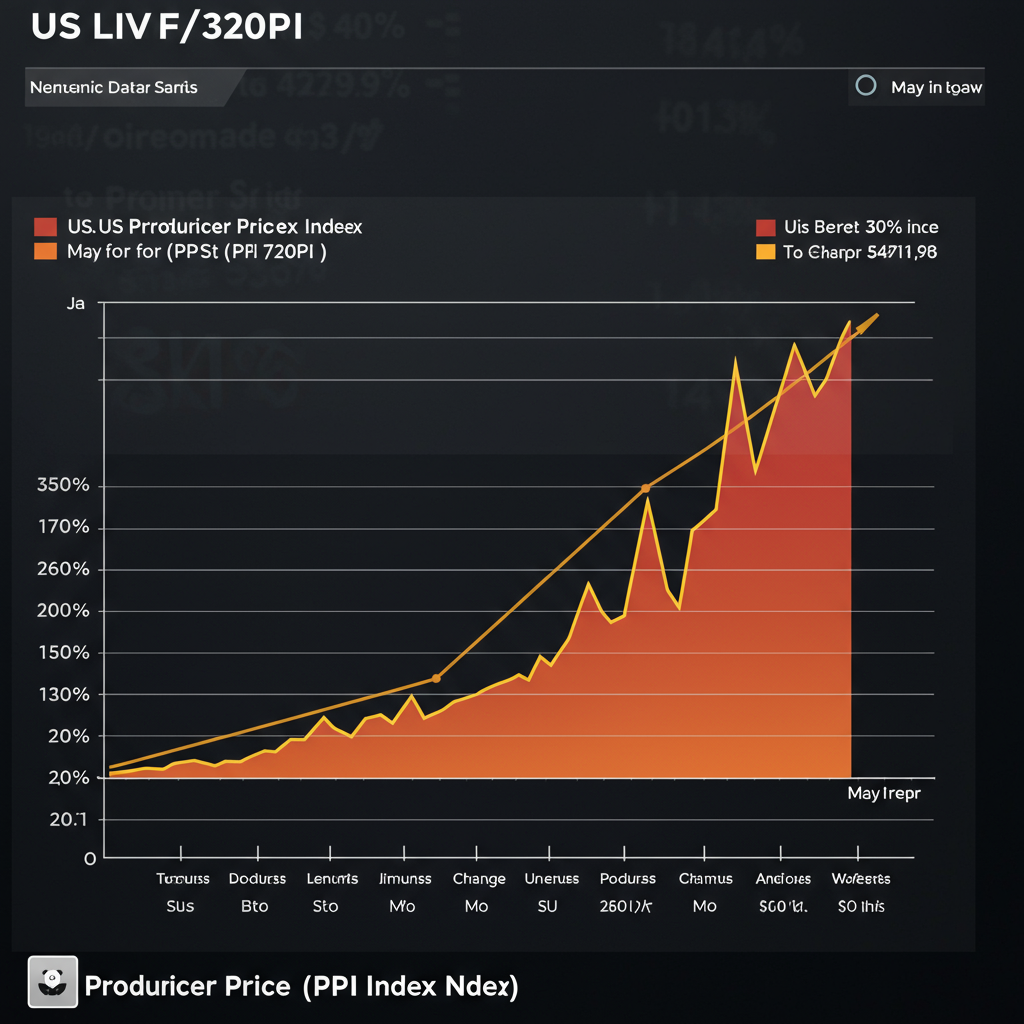US wholesale inflation, measured by the Producer Price Index (PPI), saw a modest increase in May, presenting a nuanced picture for the nation’s economy. While the headline figure rose slightly, underlying pressures and broader economic signals suggest a more complex inflationary landscape than the surface numbers might imply.
According to data released by the Bureau of Labor Statistics (BLS), prices paid to producers edged up 0.1% in May. This followed a slight dip of 0.2% in April, bringing the annual wholesale inflation rate for the 12 months ending in May to 2.6%. This annual rate matched economists’ expectations, though the monthly gain was slightly below forecasts.
Breaking Down the May PPI Numbers
The slight rise in the overall index was driven by increases in both goods and services.
Goods: Prices for goods rose by 0.2% in May. Notably, prices for durable consumer goods saw a significant jump of 0.4%, marking the largest monthly increase in this category since January 2023. Roughly 80% of the total increase in goods prices came from categories excluding volatile food and energy.
Services: Prices for services inched up by 0.1%. A key turnaround was seen in the trade services category (which covers margins for wholesalers and retailers), which rose 0.4% in May after undergoing revisions that showed a less severe drop in April than initially reported.
Excluding the often volatile food and energy components, core PPI also rose slightly by 0.1% in May. The annual rate for core wholesale inflation eased marginally to 3% from 3.1%. While food prices saw a small 0.1% increase, energy prices remained unchanged for the month.
The Muted, Yet Persistent, Impact of Tariffs
Economists have been closely watching for the effects of tariffs on producer costs. While the direct impact on the headline May PPI number was described as “largely muted,” experts caution that tariff-related costs are steadily filtering into the prices of inputs faced by producers. This is particularly evident in materials like metals, which is increasing production costs for items such as machinery and vehicles.
However, a broad “wave” of cost spikes directly attributable to tariffs and hitting the overall data remains largely “missing” or delayed. This suggests that any potential price increases for consumers tied to these trade disruptions may be slower to materialize than initially anticipated.
Broader Economic Signals: Contraction and Soaring Input Costs
Adding another layer of complexity to the economic picture, recent data from the Institute for Supply Management (ISM) indicated that the U.S. services sector unexpectedly contracted in May for the first time in nearly a year. This follows a third consecutive month of manufacturing contraction reported by ISM.
This contraction in the dominant services sector, coupled with businesses reporting significantly higher input costs, has raised concerns among some economists about the risk of “stagflation” – a period of slow economic growth combined with high inflation. The ISM survey’s measure of prices paid for services inputs surged to 68.7 in May, a notable increase from 65.1 in April and reaching its highest level since November 2022. This indicates that while the BLS’s measure of final service prices paid to producers saw only a small increase (0.1%), the costs faced by service providers are rising sharply.
Supply chain disruptions and slower delivery times, partly attributed to the impact of tariffs and ongoing bottlenecks, are contributing factors to these rising input costs and potential constraints on activity. The uncertainty created by trade policy shifts is also reportedly making long-term planning difficult for businesses across various sectors.
Volatile Data and the Fed’s Dilemma
Monthly economic data like the PPI can be volatile and subject to revisions, as seen with the adjustments made to the April figures. This variability, combined with conflicting signals from different reports (like the slightly softer Consumer Price Index released just before the PPI, contrasted with the ISM services contraction and soaring service input costs), presents a challenging environment for policymakers.
The Producer Price Index is often viewed as a potential leading indicator for future consumer inflation (CPI). However, the nuanced May report – showing a small headline increase, rising input costs, signs of economic contraction in the services sector, and delayed tariff impacts – complicates the outlook.
Experts suggest this complex and somewhat contradictory data puts the Federal Reserve in “a really hard position” regarding potential interest rate cuts. Given the uncertainty and volatility, the prevailing view is that the Fed is likely to remain cautious and may hold off on reducing rates until later in the fall, waiting for clearer economic signals to emerge.



